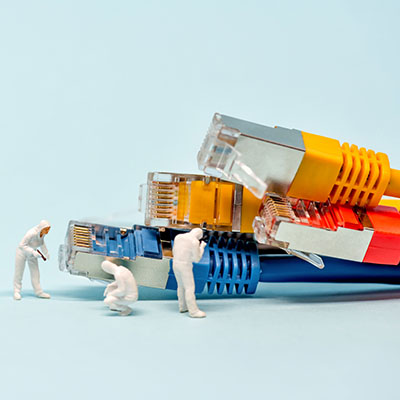Networking in your office, i.e. running cables around your workplace to ensure that all devices are connected to the in-house computing infrastructure, is made somewhat easier thanks to remote work. However, you should still approach cabling in an effective way, especially if you have a lot of devices that need to be managed.
A lot of service providers will provide new accounts with a two-in-one modem and router device to run their Internet through. The question then is: “Is this device going to work for my small business?” Simply put: no. We will tell you why.
Not every piece of technology works best on your business’ wireless network. For those components, having an idea of how to best attach your network resources via cables is important. This week, we give you three best practices our technicians use to efficiently and effectively connect those components to your network via wires.
A shared network is not a new concept in the business world. These shared networks give all computers connected to them access to a centralized file and drive infrastructure where documents can be accessed. Your IT department has likely already set one of these up for your organization, but we thought a short guide on how to map a network on your personal device might be helpful.
Wi-Fi is a very important component in the modern office, which makes it critical that it operates well. Let’s go over a few tips to help you get the highest available speeds out of your business’ wireless connection.





